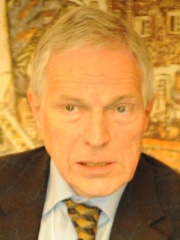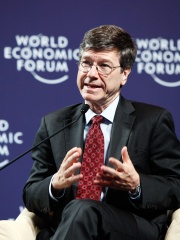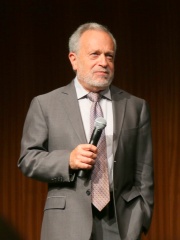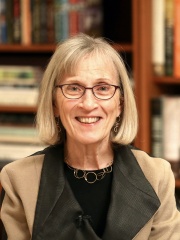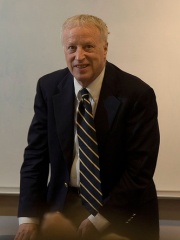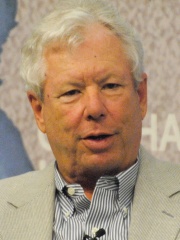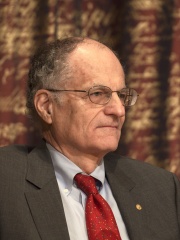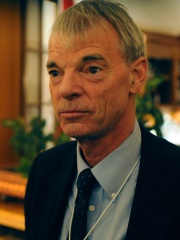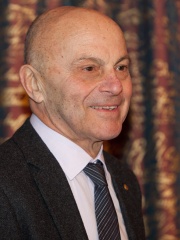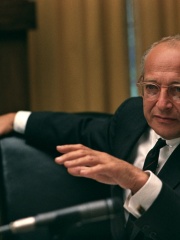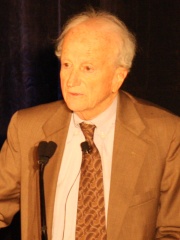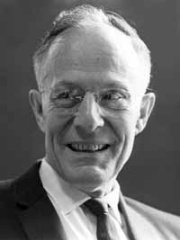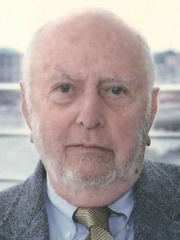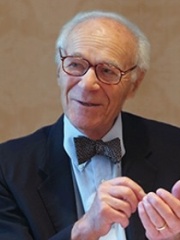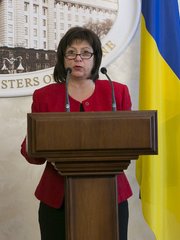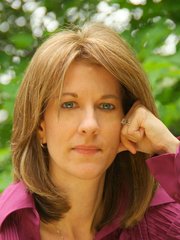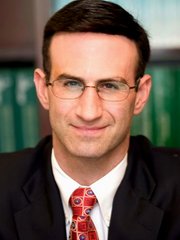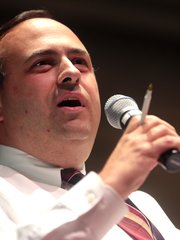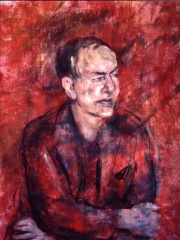
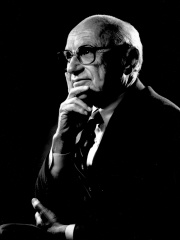
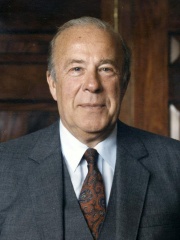
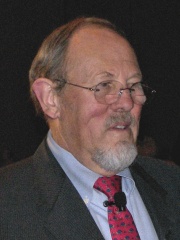
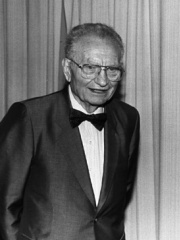
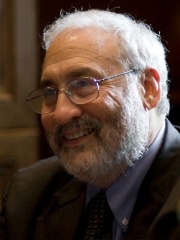
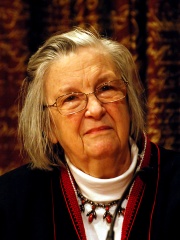
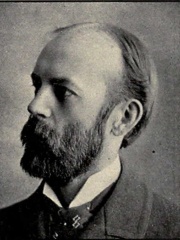
The Most Famous
ECONOMISTS from United States
This page contains a list of the greatest American Economists. The pantheon dataset contains 414 Economists, 137 of which were born in United States. This makes United States the birth place of the most number of Economists.
Top 10
The following people are considered by Pantheon to be the top 10 most legendary American Economists of all time. This list of famous American Economists is sorted by HPI (Historical Popularity Index), a metric that aggregates information on a biography's online popularity. Visit the rankings page to view the entire list of American Economists.

1. Herbert A. Simon (1916 - 2001)
With an HPI of 80.18, Herbert A. Simon is the most famous American Economist. His biography has been translated into 62 different languages on wikipedia.
Herbert Alexander Simon (June 15, 1916 – February 9, 2001) was an American scholar whose work influenced the fields of computer science, economics, and cognitive psychology. His primary research interest was decision-making within organizations and he is best known for the theories of "bounded rationality" and "satisficing". He and Allen Newell received the ACM Turing Award in 1975, and he received the Nobel Memorial Prize in Economic Sciences in 1978. His research was noted for its interdisciplinary nature, spanning the fields of cognitive science, computer science, public administration, management, and political science. He was at Carnegie Mellon University for most of his career, from 1949 to 2001, where he helped found the Carnegie Mellon School of Computer Science, one of the first such departments in the world. Notably, Simon was among the pioneers of several modern-day scientific domains such as artificial intelligence, information processing, decision-making, problem-solving, organization theory, and complex systems. He was among the earliest to analyze the architecture of complexity and to propose a preferential attachment mechanism to explain power law distributions.

2. Milton Friedman (1912 - 2006)
With an HPI of 77.39, Milton Friedman is the 2nd most famous American Economist. His biography has been translated into 97 different languages.
Milton Friedman ( ; July 31, 1912 – November 16, 2006) was an American economist and statistician who received the 1976 Nobel Memorial Prize in Economic Sciences for his research on consumption analysis, monetary history and theory and the complexity of stabilization policy. With George Stigler, Friedman was among the intellectual leaders of the Chicago school of economics, a neoclassical school of economic thought associated with the faculty at the University of Chicago that rejected Keynesianism in favor of monetarism before shifting their focus to new classical macroeconomics in the mid-1970s. Several students, young professors and academics who were recruited or mentored by Friedman at Chicago went on to become leading economists, including Nobel laureates Gary Becker (1992), Robert Fogel (1993), and Robert Lucas Jr. (1995). Friedman's challenges to what he called "naive Keynesian theory" began with his interpretation of consumption, which tracks how consumers spend. He introduced a theory which would later become part of mainstream economics and he was among the first to propagate the theory of consumption smoothing. During the 1960s, he became the main advocate opposing both Marxist and Keynesian government and economic policies, and described his approach (along with mainstream economics) as using "Keynesian language and apparatus" yet rejecting its initial conclusions. He theorized that there existed a natural rate of unemployment and argued that unemployment below this rate would cause inflation to accelerate. He argued that the Phillips curve was in the long run vertical at the "natural rate" and predicted what would come to be known as stagflation. Friedman promoted a macroeconomic viewpoint known as monetarism and argued that a steady, small expansion of the money supply was the preferred policy, as compared to rapid and unexpected changes. His ideas concerning monetary policy, taxation, privatization, and deregulation influenced government policies, especially during the 1980s. His monetary theory influenced the Federal Reserve's monetary policy in response to the 2008 financial crisis. After retiring from the University of Chicago in 1977, and becoming emeritus professor in economics in 1983, Friedman served as an advisor to Republican U.S. president Ronald Reagan and Conservative British prime minister Margaret Thatcher. His political philosophy extolled the virtues of a free market economic system with minimal government intervention in social matters. In his 1962 book Capitalism and Freedom, Friedman advocated policies such as a volunteer military, freely floating exchange rates, abolition of medical licenses, a negative income tax, school vouchers, and opposition to the war on drugs and support for drug liberalization policies. His support for school choice led him to found the Friedman Foundation for Educational Choice, later renamed EdChoice. Friedman's works cover a broad range of economic topics and public policy issues. His books and essays have had global influence, including in former communist states. A 2011 survey of economists commissioned by the EJW ranked Friedman as the second-most popular economist of the 20th century, following only John Maynard Keynes. Upon his death, The Economist described him as "the most influential economist of the second half of the 20th century ... possibly of all of it".

3. George Shultz (1920 - 2021)
With an HPI of 76.07, George Shultz is the 3rd most famous American Economist. His biography has been translated into 44 different languages.
George Pratt Shultz ( SHUULTS; December 13, 1920 – February 6, 2021) was an American economist, businessman, diplomat, and statesman who served in various positions under Presidents Richard Nixon and Ronald Reagan. A member of the Republican Party, he is one of the only two persons to have held four different Cabinet-level posts, the other being Elliot Richardson. As United States Secretary of State, Shultz played a major role in shaping the foreign policy of the Reagan administration, and conservative foreign policy thought thereafter. Born in New York City, Shulz graduated from Princeton University before serving in the United States Marine Corps during World War II. After the war, Shultz earned a Doctor of Philosophy in industrial economics from the Massachusetts Institute of Technology (MIT). He taught at MIT from 1948 to 1957, taking a leave of absence in 1955 to take a position on President Dwight D. Eisenhower's Council of Economic Advisers. After serving as dean of the University of Chicago Graduate School of Business, he accepted President Nixon's appointment as United States Secretary of Labor. In that position, he imposed the Philadelphia Plan on construction contractors who refused to accept black members, marking the first use of racial quotas by the federal government. In 1970, he became the first director of the Office of Management and Budget, and he served in that position until his appointment as United States Secretary of the Treasury in 1972. In that role, Shultz supported the Nixon shock, which sought to revive the ailing economy in part by abolishing the gold standard, and presided over the end of the Bretton Woods system. Shultz left the Nixon administration three months before Nixon resigned in 1974 to become an executive at Bechtel. After becoming president and director of that company, he accepted President Reagan's offer to serve as secretary of state, holding that office from 1982 to 1989. Shultz pushed for Reagan to establish relations with Soviet leader Mikhail Gorbachev, which led to a thaw between the United States and the Soviet Union. He opposed the U.S. aid to Contras trying to overthrow the Sandinistas by using funds from an illegal sale of weapons to Iran. This aid led to the Iran–Contra affair. Shultz retired from public office in 1989, upon the end of his tenure as secretary of State, but remained active in business and politics. He had already been an executive of the Bechtel Group, an engineering and services company, from 1974 to 1982. Shultz served as an informal adviser to George W. Bush and helped formulate the Bush Doctrine of preemptive war. He served on the Global Commission on Drug Policy, California governor Arnold Schwarzenegger's Economic Recovery Council, and on the boards of Bechtel and the Charles Schwab Corporation. Beginning in 2013, Shultz advocated for a revenue-neutral carbon tax as the most economically sound means of mitigating anthropogenic climate change. He was a member of the Hoover Institution, the Institute for International Economics, the Washington Institute for Near East Policy, and other groups. He was also a board member of Theranos. His grandson Tyler Shultz worked at the company before becoming a whistleblower about the fraudulent technology.

4. William F. Sharpe (b. 1934)
With an HPI of 74.32, William F. Sharpe is the 4th most famous American Economist. His biography has been translated into 50 different languages.
William Forsyth Sharpe (born June 16, 1934) is an American economist. He is the STANCO 25 Professor of Finance, Emeritus at Stanford University's Graduate School of Business, and the winner of the 1990 Nobel Memorial Prize in Economic Sciences. Sharpe was one of the originators of the capital asset pricing model (CAPM). He created the Sharpe ratio for risk-adjusted investment performance analysis, and he contributed to the development of the binomial method for the valuation of options, the gradient method for asset allocation optimization, and returns-based style analysis for evaluating the style and performance of investment funds.
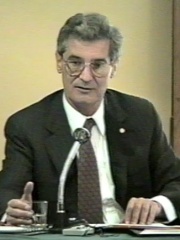
5. Robert Lucas Jr. (1937 - 2023)
With an HPI of 74.05, Robert Lucas Jr. is the 5th most famous American Economist. His biography has been translated into 50 different languages.
Robert Emerson Lucas Jr. (September 15, 1937 – May 15, 2023) was an American economist at the University of Chicago. Widely regarded as the central figure in the development of the new classical approach to macroeconomics, he received the Nobel Memorial Prize in Economic Sciences in 1995 "for having developed and applied the hypothesis of rational expectations, and thereby having transformed macroeconomic analysis and deepened our understanding of economic policy". N. Gregory Mankiw characterized him as "the most influential macroeconomist of the last quarter of the 20th century". In 2020, he ranked as the 10th most cited economist in the world.

6. Paul Samuelson (1915 - 2009)
With an HPI of 74.01, Paul Samuelson is the 6th most famous American Economist. His biography has been translated into 80 different languages.
Paul Anthony Samuelson (May 15, 1915 – December 13, 2009) was an American economist who was the first American to win the Nobel Memorial Prize in Economic Sciences. When awarding the prize in 1970, the Swedish Royal Academies stated that he "has done more than any other contemporary economist to raise the level of scientific analysis in economic theory". Samuelson was one of the most influential economists of the latter half of the 20th century. In 1996, he was awarded the National Medal of Science. Samuelson considered mathematics to be the "natural language" for economists and contributed significantly to the mathematical foundations of economics with his book Foundations of Economic Analysis. He was author of the best-selling economics textbook of all time: Economics: An Introductory Analysis, first published in 1948. It was the second American textbook that attempted to explain the principles of Keynesian economics. Samuelson served as an advisor to President John F. Kennedy and President Lyndon B. Johnson, and was a consultant to the United States Treasury, the Bureau of the Budget and the President's Council of Economic Advisers. Samuelson wrote a weekly column for Newsweek magazine along with Chicago School economist Milton Friedman, where they represented opposing sides: Samuelson, as a self described "Cafeteria Keynesian", claimed taking the Keynesian perspective but only accepting what he felt was good in it. By contrast, Friedman represented the monetarist perspective. Together with Henry Wallich, their 1967 columns earned the magazine a Gerald Loeb Special Award in 1968.

7. Joseph Stiglitz (b. 1943)
With an HPI of 73.63, Joseph Stiglitz is the 7th most famous American Economist. His biography has been translated into 68 different languages.
Joseph Eugene Stiglitz (; born February 9, 1943) is an American New Keynesian economist, a public policy analyst, political activist, and a professor at Columbia University. He is a recipient of the Nobel Memorial Prize in Economic Sciences (2001) and the John Bates Clark Medal (1979). He is a former senior vice president and chief economist of the World Bank. He is also a former member and chairman of the U.S. Council of Economic Advisers. He is known for his support for the Georgist public finance theory and for his critical view of the management of globalization, of laissez-faire economists (whom he calls "free-market fundamentalists"), and of international institutions such as the International Monetary Fund and the World Bank. In 2000, Stiglitz founded the Initiative for Policy Dialogue (IPD), a think tank on international development based at Columbia University. He has been a member of the Columbia faculty since 2001 and received the university's highest academic rank (university professor) in 2003. He was the founding chair of the university's Committee on Global Thought. He also chairs the University of Manchester's Brooks World Poverty Institute. He was a member of the Pontifical Academy of Social Sciences. In 2009, the President of the United Nations General Assembly Miguel d'Escoto Brockmann, appointed Stiglitz as the chairman of the U.N. Commission on Reforms of the International Monetary and Financial System, where he oversaw suggested proposals and commissioned a report on reforming the international monetary and financial system. He served as the chair of the international Commission on the Measurement of Economic Performance and Social Progress, appointed by the French President Sarkozy, which issued its report in 2010, Mismeasuring our Lives: Why GDP doesn't add up, and currently serves as co-chair of its successor, the High Level Expert Group on the Measurement of Economic Performance and Social Progress. From 2011 to 2014, Stiglitz was the president of the International Economic Association (IEA). He presided over the organization of the IEA triennial world congress held near the Dead Sea in Jordan in June 2014. In 2011, Stiglitz was named as one of the 100 most influential people in the world by Time magazine. Stiglitz's work focuses on income distribution from a Georgist perspective, asset risk management, corporate governance, and international trade. He is the author of several books, the latest being The Road to Freedom (2024); People, Power, and Profits (2019); The Euro: How a Common Currency Threatens the Future of Europe (2016); The Great Divide: Unequal Societies and What We Can Do About Them (2015); Rewriting the Rules of the American Economy: An Agenda for Growth and Shared Prosperity (2015); and Creating a Learning Society: A New Approach to Growth Development and Social Progress (2014). He is also one of the 25 leading figures on the Information and Democracy Commission launched by Reporters Without Borders. According to the Open Syllabus Project, Stiglitz is the fifth most frequently cited author on college syllabi for economics courses.

8. Elinor Ostrom (1933 - 2012)
With an HPI of 73.30, Elinor Ostrom is the 8th most famous American Economist. Her biography has been translated into 79 different languages.
Elinor Claire "Lin" Ostrom (née Awan; August 7, 1933 – June 12, 2012) was an American political scientist and political economist whose work was associated with New Institutional Economics and the resurgence of political economy. In 2009, she was awarded the Nobel Memorial Prize in Economic Sciences for her "analysis of economic governance, especially the commons", which she shared with Oliver E. Williamson; she was the first woman to win the prize. Trained in political science at UCLA, Ostrom was a faculty member at Indiana University Bloomington for 47 years. Beginning in the 1960s, Ostrom was involved in resource management policy and created a research center, the Workshop in Political Theory and Policy Analysis, which attracted scientists from different disciplines from around the world. Working and teaching at her center was created on the principle of a workshop, rather than a university with lectures and a strict hierarchy. Late in her career, she held an affiliation with Arizona State University. Ostrom studied the interaction of people and ecosystems for many years and showed that the use of exhaustible resources by groups of people (communities, cooperatives, trusts, trade unions) can be rational and prevent depletion of the resource without either state intervention or markets with private property.

9. Charles Cooley (1864 - 1929)
With an HPI of 73.19, Charles Cooley is the 9th most famous American Economist. His biography has been translated into 30 different languages.
Charles Horton Cooley (August 17, 1864 – May 7, 1929) was an American sociologist. He was the son of Michigan Supreme Court Judge Thomas M. Cooley. He studied and went on to teach economics and sociology at the University of Michigan. He was a founding member of the American Sociological Association in 1905 and became its eighth president in 1918. He is perhaps best known for his concept of the looking-glass self, which is the concept that a person's self grows out of society's interpersonal interactions and the perceptions of others.
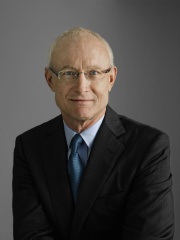
10. Michael Porter (b. 1947)
With an HPI of 72.84, Michael Porter is the 10th most famous American Economist. His biography has been translated into 35 different languages.
Michael Eugene Porter (born May 23, 1947) is an American businessman and professor at Harvard Business School. He was one of the founders of the consulting firm The Monitor Group (now part of Deloitte) and FSG, a social impact consultancy. He is credited with creating Porter's five forces analysis, a foundational framework in strategic management that remains widely used in both academia and industry. He is generally regarded as the father of the modern strategy field. He is also regarded as one of the world's most influential thinkers on management and competitiveness as well as one of the most influential business strategists. His work has been recognized by governments, non-governmental organizations and universities.
People
Pantheon has 137 people classified as American economists born between 1793 and 1972. Of these 137, 72 (52.55%) of them are still alive today. The most famous living American economists include William F. Sharpe, Joseph Stiglitz, and Michael Porter. The most famous deceased American economists include Herbert A. Simon, Milton Friedman, and George Shultz. As of April 2024, 5 new American economists have been added to Pantheon including Natalie Jaresko, Peter Boettke, and Stephanie Kelton.
Living American Economists
Go to all RankingsWilliam F. Sharpe
1934 - Present
HPI: 74.32
Joseph Stiglitz
1943 - Present
HPI: 73.63
Michael Porter
1947 - Present
HPI: 72.84
Edmund Phelps
1933 - Present
HPI: 71.04
Jeffrey Sachs
1954 - Present
HPI: 70.31
Robert Reich
1946 - Present
HPI: 67.99
Claudia Goldin
1946 - Present
HPI: 67.54
George Akerlof
1940 - Present
HPI: 67.10
Richard Thaler
1945 - Present
HPI: 66.97
Thomas J. Sargent
1943 - Present
HPI: 66.58
Michael Spence
1943 - Present
HPI: 66.01
Eugene Fama
1939 - Present
HPI: 65.95
Deceased American Economists
Go to all RankingsHerbert A. Simon
1916 - 2001
HPI: 80.18
Milton Friedman
1912 - 2006
HPI: 77.39
George Shultz
1920 - 2021
HPI: 76.07
Robert Lucas Jr.
1937 - 2023
HPI: 74.05
Paul Samuelson
1915 - 2009
HPI: 74.01
Elinor Ostrom
1933 - 2012
HPI: 73.30
Charles Cooley
1864 - 1929
HPI: 73.19
Walt Whitman Rostow
1916 - 2003
HPI: 71.27
Gary Becker
1930 - 2014
HPI: 71.02
Theodore Schultz
1902 - 1998
HPI: 70.22
Douglass North
1920 - 2015
HPI: 69.84
Lawrence Klein
1920 - 2013
HPI: 69.53
Newly Added American Economists (2025)
Go to all RankingsNatalie Jaresko
1965 - Present
HPI: 49.38
Peter Boettke
1960 - Present
HPI: 42.48
Stephanie Kelton
1969 - Present
HPI: 42.38
Peter R. Orszag
1968 - Present
HPI: 37.22
Tom Woods
1972 - Present
HPI: 35.69
Overlapping Lives
Which Economists were alive at the same time? This visualization shows the lifespans of the 25 most globally memorable Economists since 1700.

